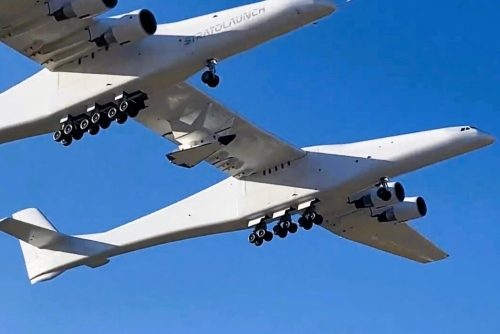October 31, 2022 Quick space links
Courtesy of BtB’s string Jay, who has been sending them to me for the past week. Unfortunately, my isp decided to only send me about half my emails during that time, and I only discovered this today. Ugh, modern big corporations. They operate like badly run feudal plantations.
Thus, tonight’s quick links will catch up on some stories we missed from late last week.
- Airbus begins testing of the Orion service module for Artemis-2, the mission that NASA claims will land humans on the Moon
I honestly fear that mission, since I have no faith in SLS, even if the first unmanned test flight works perfectly. To put humans on it and send them to the Moon seems frightfully unsound.
- On next Atlas-5 launch, ULA will test inflatable heat shield designed to bring its Vulcan 1st stage engines safely back to Earth
The launch is now set for November 9th. More information about the heat shield test here.
In general this seems far too complex and expensive, especially since SpaceX has demonstrated on more than a hundred 1st stage returns that if the speed is properly controlled the engine does not need a heat shield to protect it.
- Japan delays by one year, to ’24, the launch of an upgraded HTX unmanned cargo freighter
The HTV-X is to be launched on Japan’s new H3 rocket, which has also experienced delays and is yet to fly.
This image compares the HTV-X with the older HTV. The X is actually smaller, but it has larger solar panels.
- China completes manufacture of the 4m primary mirror to be used on its Hubble-class orbiting optical telescope, planned for launch in ’24.
If this works as planned, the telescope will fly in formation with the Tiangong-3 station, from which astronauts will periodically fly maintenance missions. At four meters diameter, this telescope is significantly larger than Hubble’s 2.4 meter primary mirror, and will thus be more capable.
- Blue Origin delivers second BE-4 flightworthy engine to ULA
ULA can now install the engines in the first Vulcan rocket and begin testing. Whether it will be ready for its first flight early next year remains unknown. It is even more uncertain whether Blue Origin can ramp up its BE-4 assembly line so as to produce enough of these engines for all of the planned launches of the Vulcan as well as Blue Origin’s own as-yet-unflown New Glenn rocket.
Courtesy of BtB’s string Jay, who has been sending them to me for the past week. Unfortunately, my isp decided to only send me about half my emails during that time, and I only discovered this today. Ugh, modern big corporations. They operate like badly run feudal plantations.
Thus, tonight’s quick links will catch up on some stories we missed from late last week.
- Airbus begins testing of the Orion service module for Artemis-2, the mission that NASA claims will land humans on the Moon
I honestly fear that mission, since I have no faith in SLS, even if the first unmanned test flight works perfectly. To put humans on it and send them to the Moon seems frightfully unsound.
- On next Atlas-5 launch, ULA will test inflatable heat shield designed to bring its Vulcan 1st stage engines safely back to Earth
The launch is now set for November 9th. More information about the heat shield test here.
In general this seems far too complex and expensive, especially since SpaceX has demonstrated on more than a hundred 1st stage returns that if the speed is properly controlled the engine does not need a heat shield to protect it.
- Japan delays by one year, to ’24, the launch of an upgraded HTX unmanned cargo freighter
The HTV-X is to be launched on Japan’s new H3 rocket, which has also experienced delays and is yet to fly.
This image compares the HTV-X with the older HTV. The X is actually smaller, but it has larger solar panels.
- China completes manufacture of the 4m primary mirror to be used on its Hubble-class orbiting optical telescope, planned for launch in ’24.
If this works as planned, the telescope will fly in formation with the Tiangong-3 station, from which astronauts will periodically fly maintenance missions. At four meters diameter, this telescope is significantly larger than Hubble’s 2.4 meter primary mirror, and will thus be more capable.
- Blue Origin delivers second BE-4 flightworthy engine to ULA
ULA can now install the engines in the first Vulcan rocket and begin testing. Whether it will be ready for its first flight early next year remains unknown. It is even more uncertain whether Blue Origin can ramp up its BE-4 assembly line so as to produce enough of these engines for all of the planned launches of the Vulcan as well as Blue Origin’s own as-yet-unflown New Glenn rocket.

